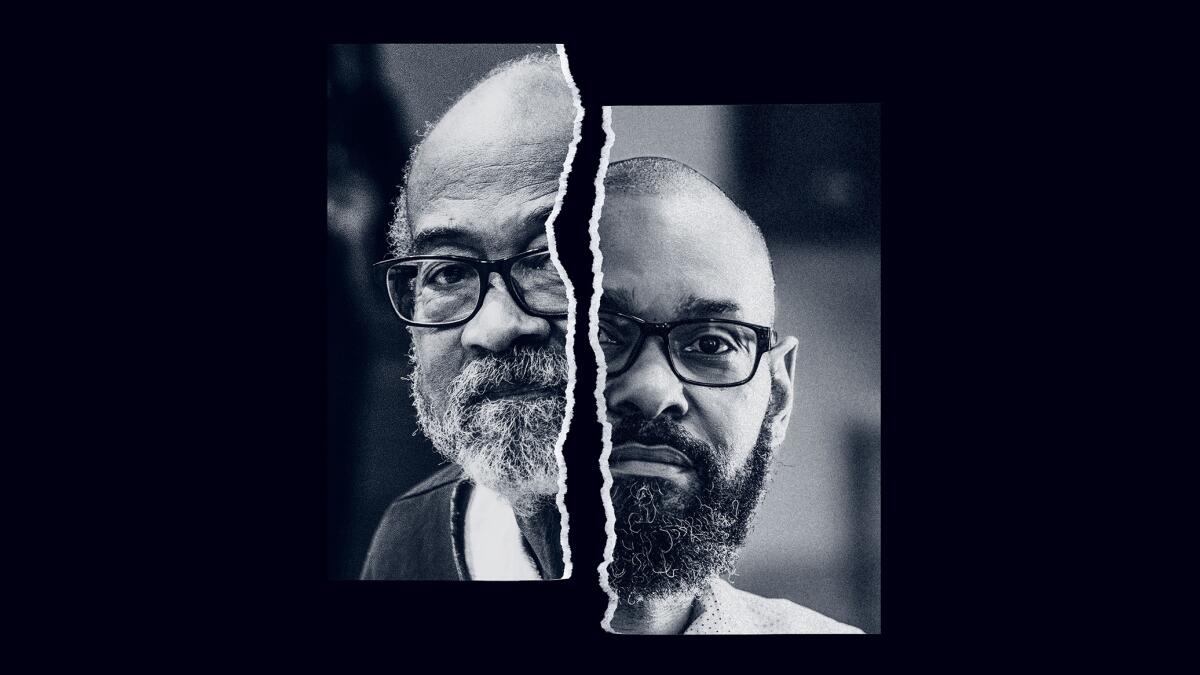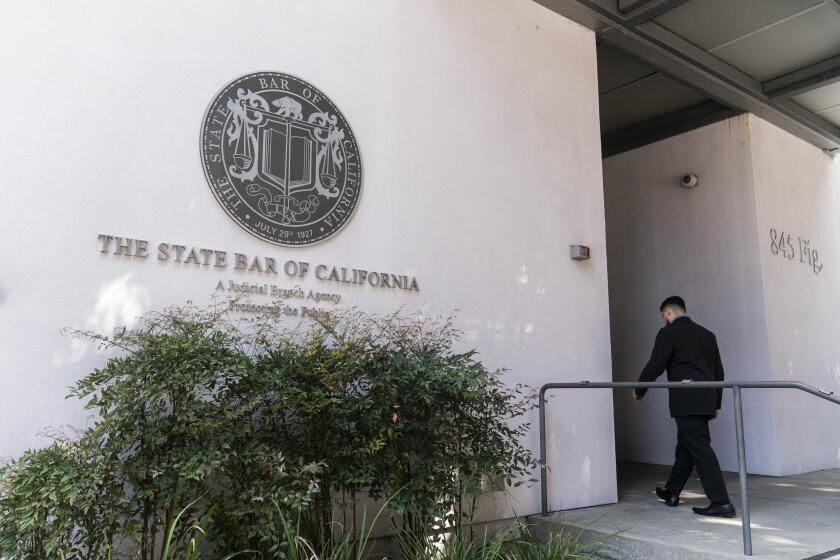From the passenger seat, I learned robotaxis can be awkward and devoid of manners
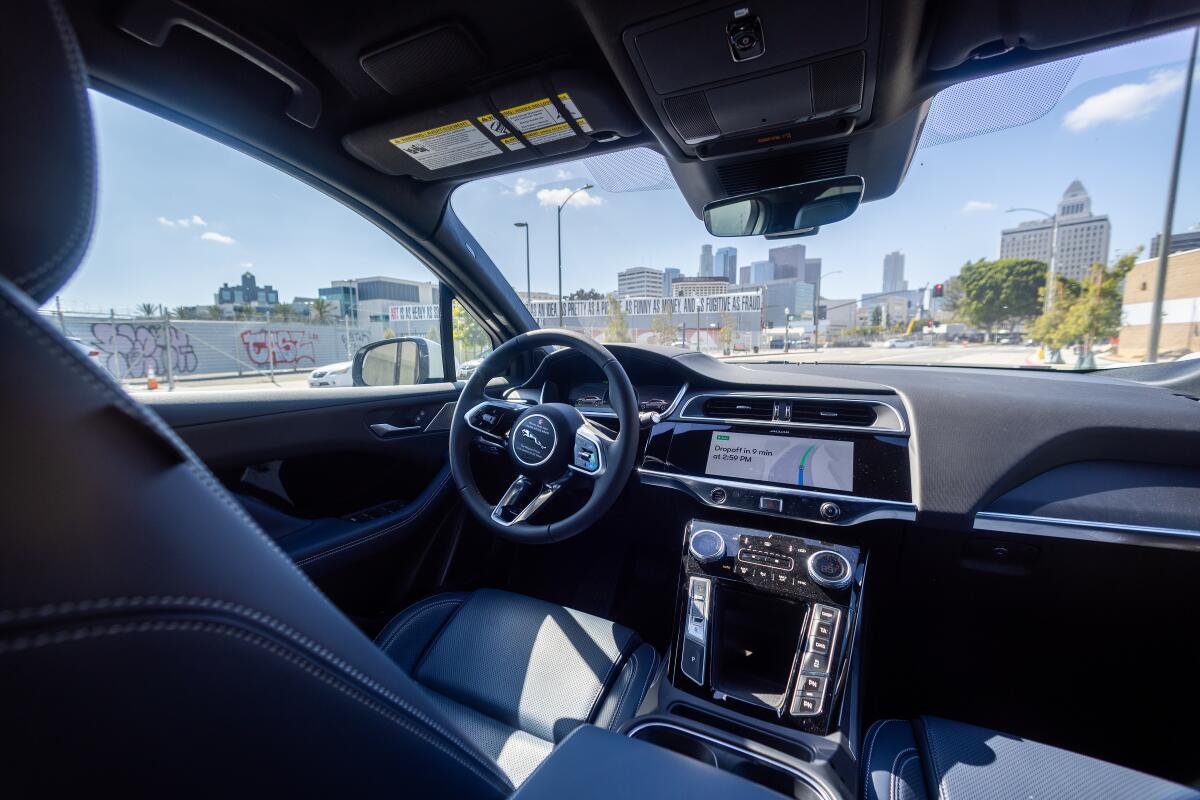
- Share via
Good morning. It’s Friday, March 15. I’m Rachel Uranga and I’m reporting from the passenger seat of a driverless car. Here’s what you need to start your day:
- Waymo launches robotaxi service in Los Angeles.
- Which conspiracy theorist will RFK Jr. pick as his running mate?
- 18 creative ways to totally unplug in L.A.
- And here’s today’s e-newspaper
Sign up for Essential California
The most important California stories and recommendations in your inbox every morning.
You may occasionally receive promotional content from the Los Angeles Times.
From the passenger seat I saw robotaxis can be awkward, devoid of manners
Robotaxis don’t listen to backseat drivers. These driverless cars don’t care if you feel uncomfortably close to a potential crime scene. And they certainly don’t know that driving up to tents on Skid Row was not only impolite but potentially offensive to whoever was in there.
They are also tone-deaf, as I learned during my first trip in a robotaxi with colleague and photographer Allen J. Schaben. Buckle up, Los Angeles — transportation history was made Thursday when a new service, “Waymo One,” began offering rides in a swath from downtown to Santa Monica.
“Once an unimaginable future, autonomous driving is now a real-world way of getting around for tens of thousands of people each week,” Waymo CEO Tekedra Mawakana announced this week at SXSW.
Riding through downtown in the white Jaguar with its spinning black dome, battery of sensors, cameras and microphones, I wasn’t sure what to expect. But I was eager to see how the robot would perform as an L.A. driver.
One man ran alongside the driverless car, pointing it out to a wide-eyed young boy, and more than a few pedestrians stood dumbfounded as they stared at the empty front seats and moving steering wheel.
Riding in a Waymo
Waymo One is carrying people across 64 square miles of the region. For now, the ride-hailing service is free to those on a 50,000-person wait list, but Waymo said it will begin charging in the coming weeks as it opens up the service to all.
More than a decade in the making, Waymo, owned by Google’s parent company, Alphabet, is unleashing its wheeled robots into the center of car culture with a machine devoid of the distinctly human emotions of road rage and commuter manners.
It doesn’t care that a Chevy Suburban driver pulled up next to us and tried to swerve into the lane, jutting out in front of the robotaxi and suddenly stopping. The robotaxi just veered away, slowed down and carried on as my own heart rate sped up.
It didn’t care that it dropped us off in front of tents on Skid Row, where humans are cautious because they have to expect the unexpected. I reflexively told the driverless car to move away. It didn’t listen.
And it didn’t care that we pulled up next to a potential crime scene, as a group of young boys on bikes were telling officers that a man nearby had pulled a gun on them. I scanned the backseat and surrounding area to see where I could duck if the situation took a turn for the worse.
But that is part of the point. Robots aren’t distracted like texting drivers. Robots don’t get angry. And they are not sexual predators, as some ride-hailing drivers have been accused of being. Their moves are based on artificial intelligence, which is not a surprise until you want a human response.
The company won’t say how large the fleet is in Los Angeles, but it’s under 50 cars in a county with more than 6 million registered vehicles. And it’s taking a cautious approach in the region, rolling out slowly as it tries to tweak and improve the product. No freeway driving — for now.
Waymo has earned some early supporters by promising to widen access for people with disabilities — including those with epilepsy who are unable to drive and may face insecurities about using traditional public transportation or ride-sharing. And leaders of the group Santa Monica Families for Safe Streets said the vehicles “set new expectations for the respect and patience all drivers should have.”
Policymakers in L.A. and elsewhere have been on the defensive. In San Francisco and the Phoenix area where they already operate, the cars have been responsible for traffic jams and hitting a cyclist and have even spawned protest groups that try to throw the cars off with objects.
“I think that’s a mistake to allow vehicles on our roads that are as undependable as your local Wi-Fi,” said Los Angeles City Councilman Hugo Soto-Martinez, who supports legislation in Sacramento that would give cities greater control over the robotaxis. It’s one of several proposed bills trying to rein in the tech.
Are robotaxis safe?
So far only Waymo has been approved by regulators to offer taxi service in Los Angeles, but more driverless cars are certainly coming.
As of last month, the California Department of Motor Vehicles had issued 38 companies permits to test autonomous vehicles with a backup safety driver. Six companies could test driverless vehicles and three manufacturers were allowed to deploy autonomous vehicles.
For its part, Waymo says its cars are far less likely to crash than humans. In a study released last year, Waymo found that its crash rate was 85% lower than that of humans.
Still, as one expert pointed out, the information was limited. Waymo based its findings on data culled from on a total of 7.1 million miles driven — 1.76 million in San Francisco and 5.34 million in the Phoenix area.
But U.S. fatalities on public roads happen about once every 100 million miles, making the data useless to draw any meaningful comparisons , said Philip Koopman, a professor at Carnegie Mellon University and expert on self-driving car safety.
Koopman likened their conclusions to calling the race of a marathon before it is run.
So far, it’s early in this race. And the trip I took showed just how much we don’t know about these cars and the emotions they can evoke from humans. Robotaxis do not experience fear or concern. But at least for us human drivers, those emotions are useful because they tell us to move out of the way, avoid a scene, be mindful — even if there is no object in front of the car or danger that can be captured by sensors.
Read more of Rachel’s story here: Waymo to launch robotaxi service in Los Angeles, but no freeway driving — for now
Today’s top stories

Politics
- Critics are blasting President Biden for taking “a destructive California idea national” for gig workers. Here’s what he really did.
- Sen. Charles Schumer calls for new elections in Israel, saying Benjamin Netanyahu has “lost his way.”
- A judge rejects a bid by Trump to throw out classified documents case on constitutional grounds.
- Robert F. Kennedy Jr. is considering two conspiracy theorists, Aaron Rodgers and Jesse Ventura, as running mate.
- L.A. City Councilmember Nithya Raman wins reelection as Ethan Weaver concedes.
Business
- SpaceX Starship successfully blasts off on its third test flight.
- Former Treasury Secretary Steven Mnuchin is assembling an investor group to buy TikTok.
More big stories
- Mystery surrounds the sudden increase in steelhead trout deaths near California water pumps.
- A billionaire L.A. family claims racism at an elite Westside country club.
- This Cal State immigration clinic provides free legal advice. It might come to a ‘full stop.’
- Investors bought a historic Echo Park home. Sisters who have lived there since childhood are fighting to stay.
- Kanye West barely performs in headlining set at Rolling Loud.
- L.A.’s Oaxacan community rallies after a wildfire devastates a region of Mexico famed for its mezcal.
- A father was convicted of murdering his four children and their grandmother in their Lancaster home.
- A colleague’s suicide exposes a crisis among L.A.’s restaurant inspectors.
- A bus-sized piece of concrete on the beach: A tale of waste, neglect and climate change.
- Regina King says her son Ian is “always with me,” breaking her silence two years after his death.
Get unlimited access to the Los Angeles Times. Subscribe here.
Commentary and opinions
- Sammy Roth: Water is life. It’s also energy — whether you like dams or hate them.
- Mark Z. Barabak: Northern California is losing its political dominance, and Adam Schiff’s victory proves it.
- Editorial: Councilmember Nithya Raman’s reelection is a win for a more affordable, humane Los Angeles.
- David Lauter: Polls get it right most of the time. Here’s what to be wary of.
- Dylan Hernández: ‘He’s never satisfied.’ Yoshinobu Yamamoto’s success is rooted in a willingness to change.
Today’s great reads
They robbed banks in L.A.’s heist heyday. Freed from prison, can they resist the “lifestyle”? Bruce Bell and Montez Day were bank robbers in L.A. when it was the “bank robbery capital of the world.” After prison, will they return to lives of crime?
Other great reads
- Inside Shohei Ohtani’s baseball journey.
- They tried to sell a “million-dollar” LeBron James card. But was it legit?
- How Mellon chief Elizabeth Alexander (and $500 million) changed the nature of the monuments we revere.
How can we make this newsletter more useful? Send comments to essentialcalifornia@latimes.com.
For your downtime
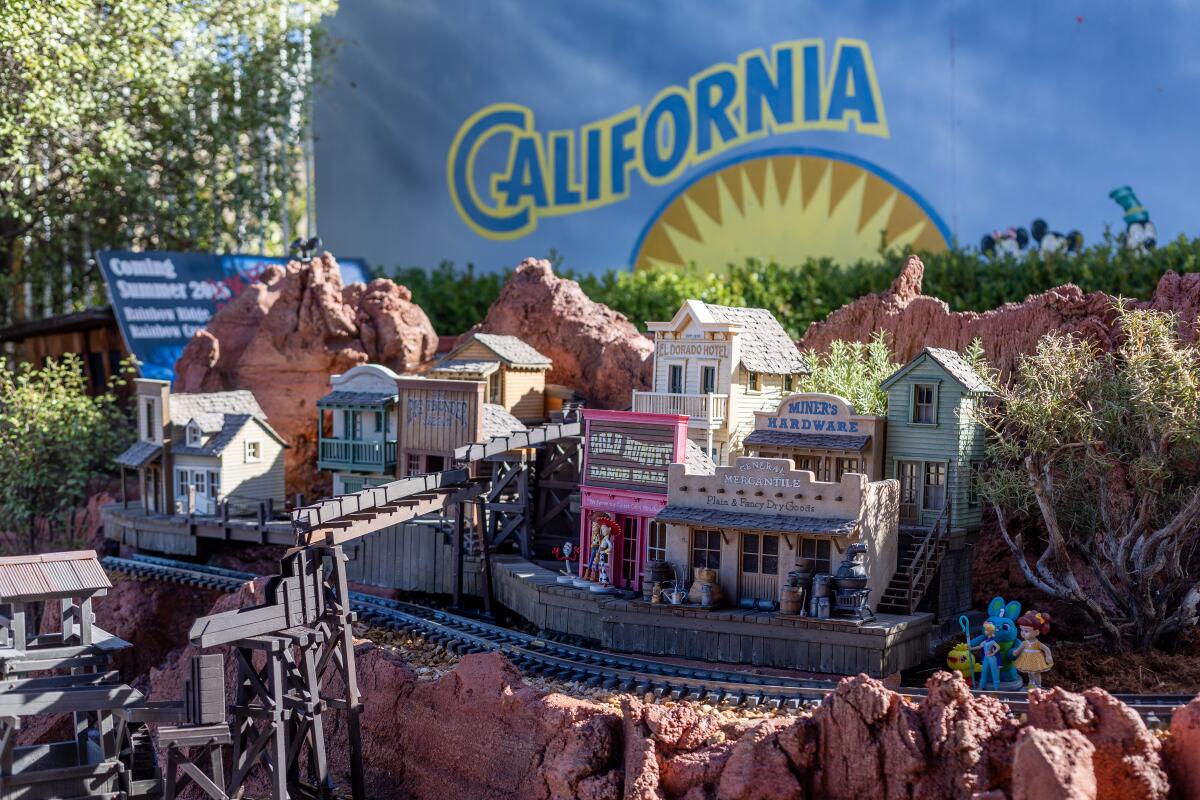
Going out
- He built a mini-Disneyland in his backyard — and you can walk through it this spring.
- 18 creative ways to totally unplug in L.A. — because you deserve to ditch your phone.
- The lush plant shop where people play in the dirt — and leave feeling renewed.
Staying in
- How to turn grocery store staples into plants that will thrive in an L.A. garden.
- These are the 5 best L.A. heist movies.
- 🧑🍳 Here’s a recipe for flourless chocolate cake.
- ✏️ Get our free daily crossword puzzle, sudoku, word search and arcade games.
And finally ... a great photo
Show us your favorite place in California! We’re running low on submissions. Send us photos that scream California and we may feature them in an edition of Essential California.
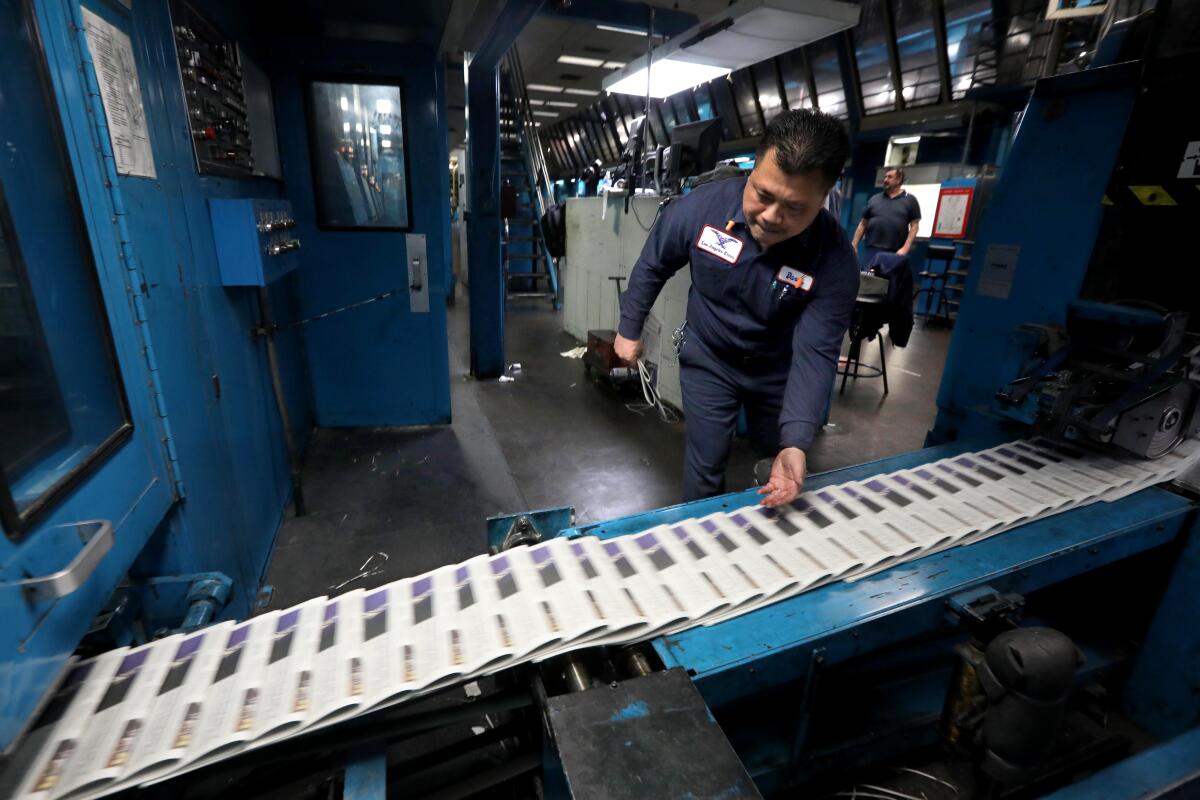
Today’s great photo is from Times photographer Genaro Molina on the day the presses stopped running at the Los Angeles Times’ Olympic plant. The March 11 edition of The Times’ print edition was the last at the L.A. plant. Starting with the March 12 edition, the paper will be printed in Riverside by the Southern California Newspaper Group.
Have a great day, from the Essential California team
Rachel Uranga, reporter
Kevinisha Walker, multiplatform editor
Stephanie Chavez, deputy metro editor
Check our top stories, topics and the latest articles on latimes.com.
Sign up for Essential California
The most important California stories and recommendations in your inbox every morning.
You may occasionally receive promotional content from the Los Angeles Times.

